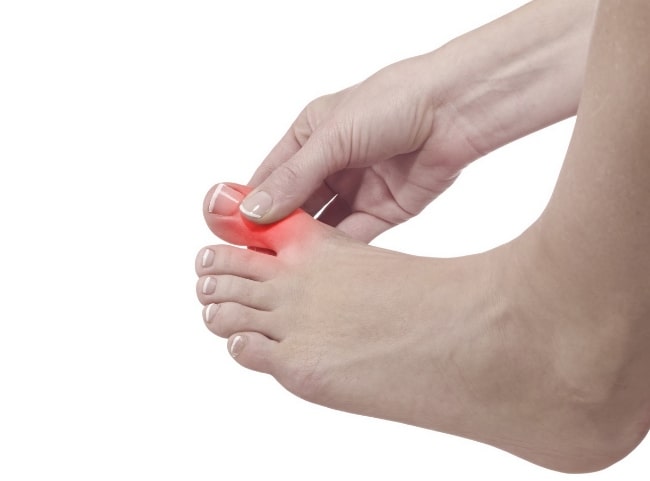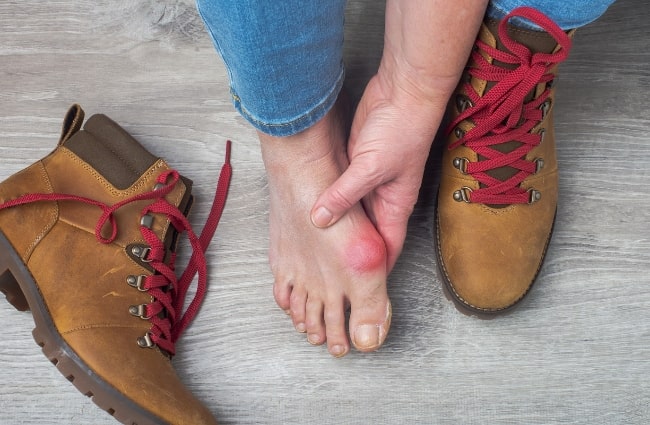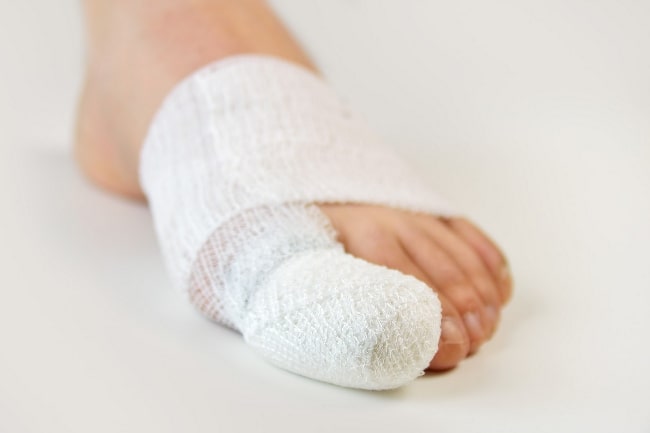Bunions are one of the most common podiatric conditions. While it’s not exactly a dangerous medical issue, it can be quite painful and often comes with corns. Luckily, there is a bunion and corn removal surgery that helps patients get rid of these unpleasant conditions. Let’s take a look at what this surgery entails, what its benefits are, and when you should consider undergoing it.

What Is Bunion and Corn Removal Surgery?
Bunion and corn removal surgeries are both common procedures performed by podiatrists to alleviate foot pain and discomfort. A bunion surgery, also known as a bunionectomy, aims to correct the misalignment of the big toe joint, typically caused by genetic factors or ill-fitting shoes. It involves the realignment of the bone, removal of excess tissue, and the insertion of hardware if necessary.
On the other hand, corn removal surgery is a minimally invasive procedure to eliminate painful corns, which are localized areas of thickened skin. During this surgery, the surgeon carefully shaves away the layers of dead skin to relieve pain and prevent recurrence. Both surgeries are performed under local anesthesia, and post-operative care is essential for a successful recovery and to address the underlying causes to prevent future foot issues.
Is Combined Treatment for Bunions and Corns a Good Thing?
Corns develop on the bunions simply because bony protrusions are exposed to a lot of pressure and friction – both of which lead to the thickening of the skin and, consequently, corns. Some corns can be dealt with non-surgically, but there’s always a risk of them forming again in the same place if the bunion is still present.
Even if you get them removed surgically, they may reoccur since you haven’t dealt with the underlying issue that causes them (the pressure and friction). So, by getting rid of the bunion, you can ensure that part of your foot is no longer at risk for corns. When you undergo bunion surgery, your surgeon can also take care of the corn – it’s a simple procedure that involves making an incision and removing the corn with its root.

Bunion and Corn Removal Surgery Options You Should Consider
One of the best things about bunion surgeries is that, no matter which surgical technique your surgeon decides to use, the procedure will be an outpatient one – meaning you’ll get to go home the same day after surgery is done. Another plus is that bunion removals don’t require general anesthesia – you’ll get a local anesthetic, which will be perfectly enough to prevent you from experiencing any pain or discomfort while your surgeon does their work.
There are a few surgery options you should consider when it comes to removing bunions. Your podiatrist will determine which procedure suits you best based on the complexity of your case. In mild cases, surgeons can do an exostectomy, otherwise called “shaving” of a bunion – a protrusion of the bone is shaved. However, this technique doesn’t guarantee that your bunion won’t come back after some time.
Exostectomy is often combined with osteotomy, a procedure during which doctors place pins and screws in the foot to fixate the bones in desired positions. Osteotomy is the most common bunion removal surgery. If the bunion is quite severe, your doctor may opt for arthrodesis – the procedure that’s mostly used for patients with arthritis. Arthrodesis involves removing a part of the big toe joint and fixing the bones with screws to keep them in place. It’s a complex surgery, and it’s not performed very often nowadays.

When Is Bunion Removal Surgery Recommended?
Not everyone with a bunion requires surgery – mild cases when bunions aren’t too painful can be treated with pain medication (usually NSAIDs) or corticosteroids. Orthotics, bunion pads, physical therapy, and taping may help as well. Of course, these are mostly management techniques and won’t make the bunion go away.
To achieve that, you would have to undergo surgery. Most patients decide to have surgery when the pain becomes too much for them. If the doctor sees that no non-surgical treatments give results, they will recommend surgery. In addition to that, some people opt for surgery for cosmetic reasons.
Benefits of Undergoing Bunion Removal Surgery
The most obvious benefit is, naturally, getting rid of the pain and discomfort. You will be able to stand, walk, and run as you used to before – after a brief recovery period and a round of physical therapy. Everyday tasks will be easier, and you won’t feel uncomfortable showing your feet and wearing sandals. Bunion removal is a simple, low-risk, and straightforward procedure with a very high success rate.
Discuss Your Options With a Foot Doctor in Miami
If you don’t know what the next step in your bunion treatment should be, it would be best to consult with an experienced podiatrist. A skilled foot doctor will know what to do – and if you’re looking for one in Miami, be sure to book a consultation with one of the doctors on the Luxe Foot Surgery team. This clinic is home to excellent medical professionals who will know how to address your condition appropriately. Don’t waste any time – start your journey to healthy feet today!
